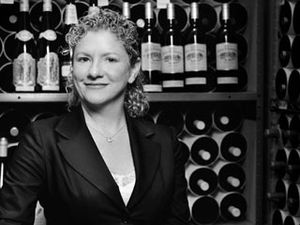To Cork or Not to Cork by Gillian Ballance
Gillian Ballance, wine director for the PlumpJack Group, views the selection and enjoyment of wine in a manner entirely in keeping with the philosophy that inspired the original PlumpJack Wine Store: expertise without pretense, with an emphasis on the fun and excitement of exploration and discovery. Ballance believes that the job of the wine director is "to keep the list interesting, with fun, new wines for guests to try and for the staff to learn about."
There has been so much debate lately about bringing wines into restaurants. As Wine Director for PlumpJack Group, I am constantly barraged with questions on this subject. Though there is no "right" answer to this debate, I do feel that I can put forth some coherent thoughts on the matters surrounding the topic, and perhaps offer a little bit of sound advice to the consumer on the best way to bring wine to a restaurant.
Let me start off by saying that the number of wines being brought to restaurants has tripled in the last ten years, having a definite impact on a restaurant's bottom line. I feel that there are a number of reasons for this: the prices of wines in restaurants can be exorbitant, as some restaurateurs will mark wines up from the wholesale or retail prices as many as three or four times. As consumption increases (by 2010 the US will lead all other countries in wine consumption), so does pricing awareness. Consumers may think that they are being taken advantage of. On the contrary, the margin on markups goes to support the restaurant's bottom line, as well as buying stemware, wine education for staff, wine storage, and other components of running a wine program.
What many PlumpJack guests don't realize is that our markup on wines is only 1.7-2 times the bottle cost, which is usually only $5-$10 above retail. This supports PlumpJack's core ideology that consumers should learn about wines in a friendly, helpful atmosphere, where they could feel free to ask questions, where the selection is large and the prices fair, and where, in homage to the store's Shakespearean namesake, wine is once more associated with the spirit of fun and adventure.
With increased consumption comes more internet purchasing and savvier wine collectors. Most people who collect wine use the dining occasion to share their cellar with friends and loved ones. It may just so happen that people who began collecting 10 or 20 years ago have beautifully cellared and aged wines that many restaurants can no longer afford to have. For many, especially in the Bay Area, the expense of running a restaurant is at an all-time high due to city initiatives such as the minimum wage increase, paid sick leave requirement, and mandatory healthcare ordinance, to name a few. Gone are the days of being able to buy wines from classic regions and hold them until they are ready. There are several great wine lists in the city that do offer amazing selections of older wines, but in many instances, they are priced way beyond average spending limits.
In defense of the restaurants, many are staffed with one to four sommeliers whom are dedicated to providing a memorable wine and food experience which, along with the ambiance, must all be outstandingly coordinated and played out like a symphony. It is an arduous task and ever-evolving process to fuse a wine list and menu together. Each year provides new sets of challenges for wine selection. Vintages change, wineries are sold to big companies, new labels appear everyday, and it is the job of the sommelier to tailor-fit your experience and provide you with the best of the best.
When bringing in wine to a restaurant, you should do so because you'd like to enjoy a special bottle, one you've been saving, or to enjoy something not on the wine list--not to save some money on your end. First and foremost, check that it is not already on the list. If there is a special bottle or two that you want to bring to a restaurant, why not help support the loss of wine revenue (which provides around 40% of the restaurant's income) and purchase a wine from the list? You may find that some places will often waive a corkage fee when you also purchase a bottle.
Several months ago, there was heated debate about some restaurants over not allowing people to bring wine in, or charging an enormous fee. I can see their logic, but I don't agree. After all, are you promoting wine consumption, or not?

Table of Contents

Like to eat?
Subscribers get the goods.

